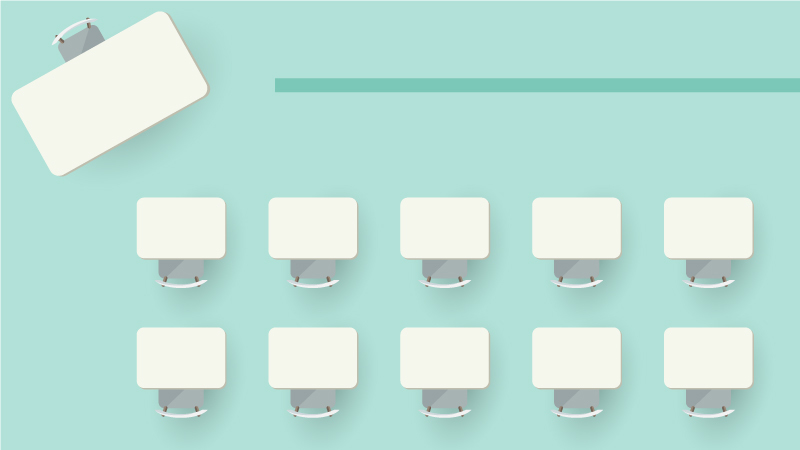For teachers, the way you set up your classroom can determine how much learning gets done each day.
From traditional rows and columns to horseshoes and group setups, there are numerous ways to arrange a classroom. The decisions teachers make(Open Link in new tab) about whether students can select their own seats and the actual physical design of the classroom can have a big influence on equity and discipline in the classroom.
For instance, designing a classroom that makes it difficult for teachers to move around can limit access to students, which can reduce opportunities for one-on-one instruction. On the other hand, a design that leaves too much space between students can harm collaboration and detract from the sense of community in the classroom.
Here are some ideas for how you can organize your classroom to maximize learning and reduce the amount of time you spend on classroom management.
Traditional
A traditional classroom is designed with rows of seats, all facing toward the front of the classroom. It’s one of the most common styles of classroom design across all levels of primary education and in some post-secondary institutions.
Pros:
- Focuses on the front of the room, which naturally directs students’ attention in a single direction toward the teacher
- Creates space for teachers to walk between the rows and columns with easy and fluid access to all students
- Makes it harder for students to cheat on tests by creating distance between students evenly across the classroom
Cons:
- Makes student collaboration more difficult due to the back-to-front design and desks being spread evenly apart
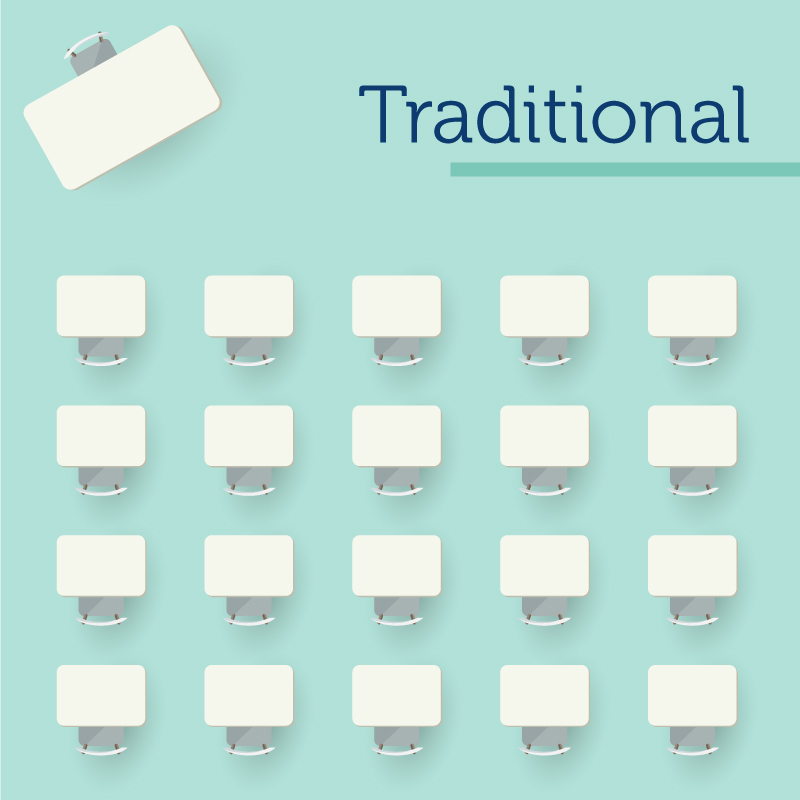
Stadium Seating
In this classroom design, desks or tables are placed in angled rows with desks touching. Stadium seating focuses the students’ attention to a single point at the front of the room.
Pros:
- Enables the teacher to see what every student is doing because the rows are angled against a fixed point at the front of the classroom
- Gives all students a clear view of the teacher
- Uses less floor space by condensing the amount of total space needed between desks
- Allows students to work collaboratively with neighbors and those in the immediate row
Cons:
- May place some students too far away from the front of the room (depending on how many rows are used or how wide each row is)
- Tougher to enforce classroom management after two rows
- Less suitable for classrooms that often require group working stations due to the rows’ unique shape and condensed seating
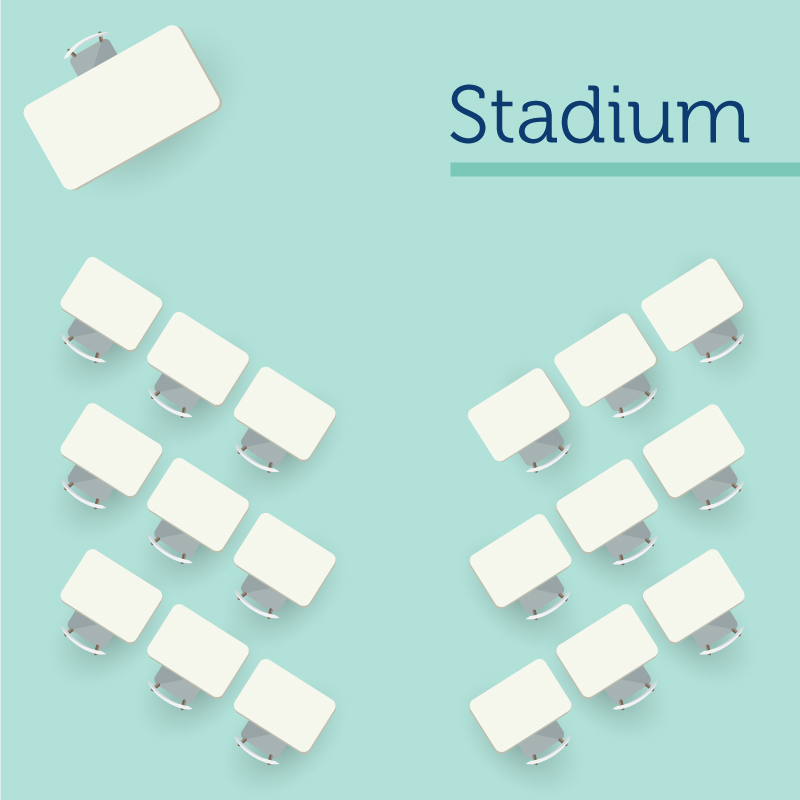
Horseshoe or Semicircle
In a horseshoe setup, desks are placed in a semicircle. The desks face the front of the room and focus students’ attention to the center of the room. The horseshoe style is typically used for demonstrations or group discussions.
Pros:
- Great for discussions because students can easily see and engage with each other around the perimeter of the seating design
- Directs focus to a central point all students can see and places all students equidistant from the central focus
- Allows the teacher to easily see all students
Cons:
- Uses more space than other designs and may not be possible in smaller classrooms
- Hinders small-group discussions because students may often require the full scope of the classroom to communicate across the seating design
- Easier for students to cheat during assignments because their visible range is increased, and multiple angles of view make it hard to properly police roaming eyes
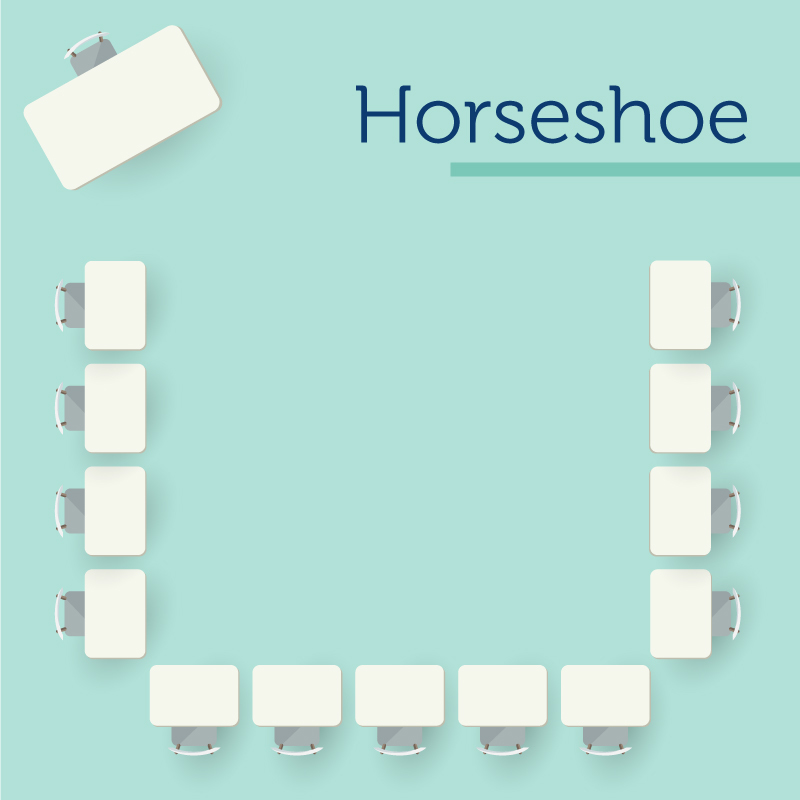
Groups
Also known as pods, this style places desks together in groups. In this arrangement, students can collaborate together as well as receive both small-group and large-group instruction from the teacher. The group arrangement can be good for work stations and regular lesson plans, among other uses.
Pros:
- Allows for collaboration between students within their group
- Allows teachers to interact with students on an individual or small-group basis
- Easy to set up and reconfigure for different situations as needed, such as a jigsaw activity
Cons:
- Uses more space than other designs and may not be possible in smaller classrooms
- Requires a healthy classroom community so the students are all paying attention to the lesson and their tasks; may not be ideal for students who have difficulty remaining focused
- Easier for students to cheat during assignments due to the close proximity of their group neighbors
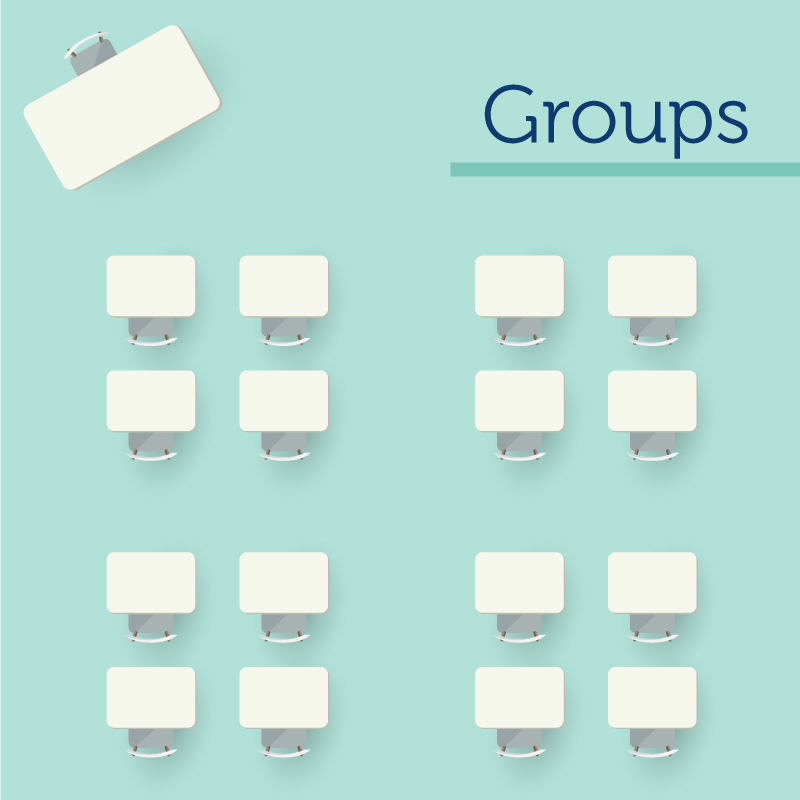
Combination
In a combination classroom arrangement, teachers can use the best parts of two or more classroom designs. The arrangement can be changed on a day-to-day basis or be permanent. Teachers can use this design during a lab or an activity that has rotating stations. Classrooms with different sizes of desks may use this style.
Pros:
- Allows for a flexible design that can facilitate a workshop exercise or have students move from one station to another
- Makes use of whatever desks are available by not requiring specific sizes or dimensions to create a functional classroom design
Cons:
- Doesn’t allow for uniformity across the class
- Doesn’t give every student the same view of the teacher or the same size or shape of workspace
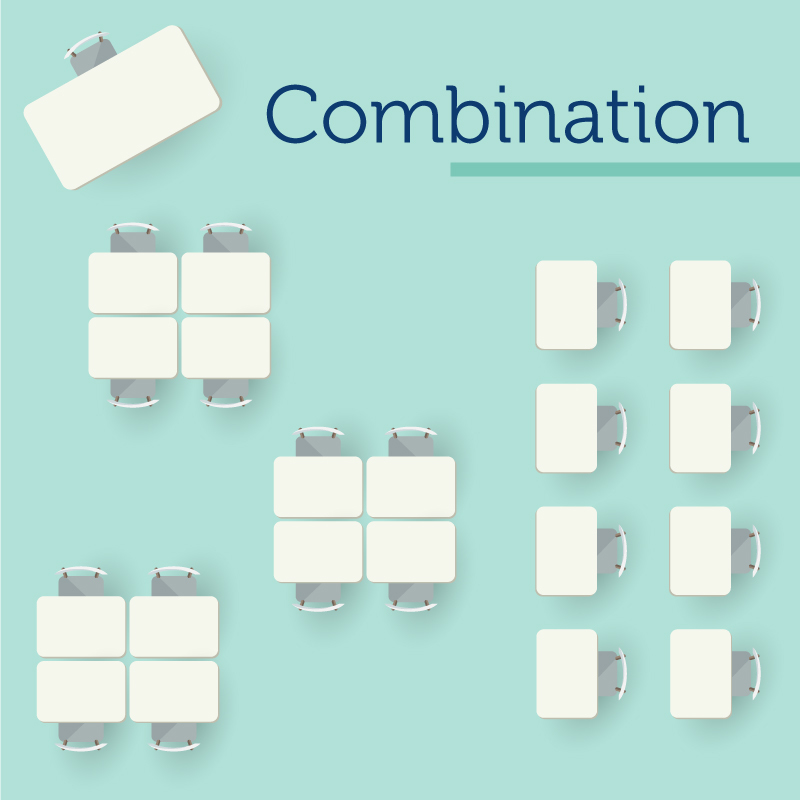
So, Which Should You Choose?
The reality is that there’s no single right way to set up your classroom. You might try a few different arrangements over the course of the year, in addition to experimenting with different seating charts. You never know which students will work together best, or which students will be more successful in which spots in the classroom. Being flexible about classroom layout and seating charts upfront will allow you to find the best combination that will lead to overall success in your classroom.
